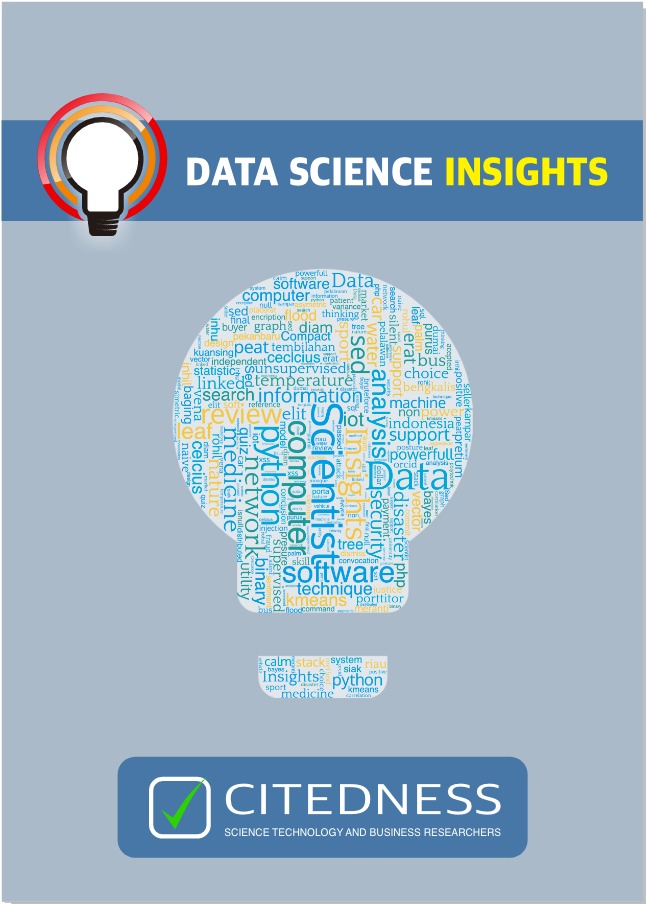Comparative Analysis of Data Visualization Techniques for Rainfall Data
DOI:
https://doi.org/10.63017/jdsi.v3i2.204Keywords:
data quality, digital data collection, Google Forms, low ICT literacy, rural communities, rural ICT access, smartphone surveysAbstract
Rainfall data is essential for applications such as climate monitoring, agricultural planning, flood forecasting, and water resource management. However, the interpretation of this data is often hindered by its high volume, variability, and multi-scale temporal nature. Effective visualization is critical not only for summarizing complex datasets but also for uncovering patterns, detecting anomalies, and facilitating informed decision-making. Despite the availability of numerous visualization techniques, selecting the most suitable method for rainfall data, especially across varying temporal resolutions is a challenging task. This study presents a comparative analysis of widely used data visualization techniques in the context of rainfall data. The methodology was structured into three phases: understanding the nature of rainfall data, reviewing relevant visualization techniques, and conducting a comparative content analysis. A SWOT (Strengths, Weaknesses, Opportunities, and Threats) evaluation was used to assess each technique’s analytical potential, while a temporal suitability comparison was performed across five time granularities: yearly, monthly, weekly, daily, and hourly. Findings show that no single technique is universally effective. Instead, each method demonstrates specific strengths and limitations depending on the temporal scale and analytical objective. Line charts and bar charts are well-suited for lower-frequency data, while heat maps and scatter plots are more effective for high-resolution, time-sensitive patterns. Box plots and histograms provide valuable insights into data distribution and variability, whereas map-based visualizations excel in spatial analysis but require enhancements for temporal exploration. The study concludes that visualization effectiveness depends on aligning method selection with data characteristics and analytical goals. A thoughtful combination of techniques is often necessary to achieve clarity, reduce misinterpretation, and enhance decision support in rainfall data analysis.
References
Y. H. Hadi, K. R. Ku-Mahamud, and W. H. W. Ishak, "Extreme rainfall forecasting model based on descriptive indices," Journal of Technology and Operations Management, vol. 14, no. 1, pp. 35–52, Jul. 2019.
M. A. Hael, Y. Yongsheng, and B. I. Saleh, "Visualization of rainfall data using functional data analysis," SN Appl. Sci., vol. 2, p. 461, 2020. doi: 10.1007/s42452-020-2238-x.
S. Jeong, Y. Liang, and X. Liang, "Design of an integrated data retrieval, analysis, and visualization system: Application in the hydrology domain," Environ. Model. Softw., vol. 21, no. 12, pp. 1722–1740, 2006. doi: 10.1016/j.envsoft.2005.09.007.
M. N. O. Sadiku, A. E. Shadare, S. M. Musa, and C. M. Akujuobi, "Data visualization in engineering," Int. J. Eng. Res. Adv. Technol. (IJERAT), vol. 2, no. 12, pp. 11–16, 2016.
F. Chebana, S. Dabo-Niang, and T. B. M. J. Ouarda, "Exploratory functional flood frequency analysis and outlier detection," Water Resour. Res., vol. 48, no. 4, pp. 1–20, 2012.
Y. K. Joshi, U. Chawla, and S. Shukla, "Rainfall prediction using data visualisation techniques," in Proc. 10th Int. Conf. Cloud Comput., Data Sci. & Eng. (Confluence), Noida, India, 2020, pp. 327–331. doi: 10.1109/Confluence47617.2020.9057928.
A. Sinha, "Data visualization pitfalls: A systematic review," Data Insights Res. Anal., vol. 12, no. 3, pp. 149–159, 2024. doi: 10.36676/dira.v12.i3.62.
J. Wolfe, "Teaching students to focus on the data in data visualization," J. Bus. Tech. Commun., vol. 29, no. 3, pp. 344–359, 2015. doi: 10.1177/1050651915573944.
T. B. Chandra and A. K. Dwivedi, "Data visualization: Existing tools and techniques," in Hybrid Computational Intelligence for Pattern Analysis, S. De, S. Dey, S. Bhattacharyya, and S. Bhatia, Eds. Academic Press, 2022, pp. 177–217. doi: 10.1016/B978-0-32-385708-6.00017-5.
R. N. M. R. Mohamad and W. H. W. Ishak, "Forecasting the flood stage of a reservoir based on the changes in upstream rainfall pattern," J. Technol. Oper. Manag., vol. 14, no. 2, pp. 46–52, Dec. 2019. doi: 10.32890/jtom2019.14.2.8726.
K. K. Sarda, "Rainfall predictions using data visualization techniques," Int. J. Res. Appl. Sci. Eng. Technol. (IJRASET), vol. 10, no. V, pp. 332–336, May 2022. doi: 10.22214/ijraset.2022.42151.
Downloads
Published
How to Cite
Issue
Section
License
Copyright (c) 2025 Data Science Insights

This work is licensed under a Creative Commons Attribution-NonCommercial 4.0 International License.



 SUPPORT
SUPPORT








